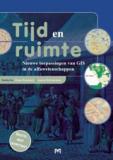
|
Digital Humanities Workbench |
Home page > Data analysis > Structured data analysis > Spatial and temporal analysis Spatial analysisThe physical environment is an important factor when it comes to placing and interpreting various phenomena. Using geographic information is a fundamental part of this. When maps are available in digital form they can be linked to datasets that have a spatial component. The term geo-information technology is used for modern interactive technologies that provide access to geo-information as well as tools to interact with that geo-information. This technology allows us to make large amounts of geo-information accessible in a user-friendly way. Well-known social applications of geo-information technology are Google Maps and Google Earth, which can be used to view digital aerial photos and satellite images on different scales. In addition, Google Maps and Google Earth allow users to set out routes and access to all sorts of spatially localized photos, Wikipedia articles, and websites of restaurants, shops and hotels. Other examples include car navigation systems and geo-identication software on smartphones. This technology is also widely used for research purposes. Depending on the type of research data, many different forms of spatial analysis are possible, as long as these data have a spatial component and are stored in a structured way. If the data also have a temporal component (in the form of years or dates), this type of analysis is called spatial and temporal analysis.
Geographic information systems (GIS)GIS, or Geographic Information System, is a major example of geo-information technology. Underlying GIS is a database with research data that have a geospatial component, a data structure for storing this component, digital map data with geo-references and software for editing and processing these data.In the humanities, GIS is used primarily for the following purposes:
You can find brief descriptions of the following GIS applications in the humanities (all based on VU research) on a separate page:
ToolsThe VU primarily uses the following programs for GIS applications: Autocad, Microsoft Access, MySQL, MapInfo, ArcGIS and Google Earth. ArcGIS is a commanly used program that can create digital maps, among other things, and link them to database information with a geographic component. (Geo)data can be stored using ArcGIS, but they can also be stored in an external database (such as Microsoft Access and SQL databases).
More information
GIS at VUIn the Faculty of Humanities, GIS is mainly used for archaeological research and in historical research.Digital geographic (GIS)files can be found on VU Geoplaza. These files can include geographical information about the whole world, continents or other regional units, but are especially based on the Netherlands (such as the New Map of the Netherlands). The Spatial Information Laboratory (Spinlab) is the centre for research and teaching in the field of Geo-Information Science at VU Amsterdam. Spinlab is part of the Department of Spatial Economics, but some of the staff are mainly concerned with the applications of GIS and other methods of spatial analysis in the humanities.
References for GIS and historical researchHisGIS HISGIS (Historical GIS) is based on the digitized version of the oldest cadastral map (1832). It is linked to various chronological and thematic map layers, which can be combined in various ways.
NLGis
The Historical GIS Research Network |
Other topics in this section: Statistical analysis Network analysis |
